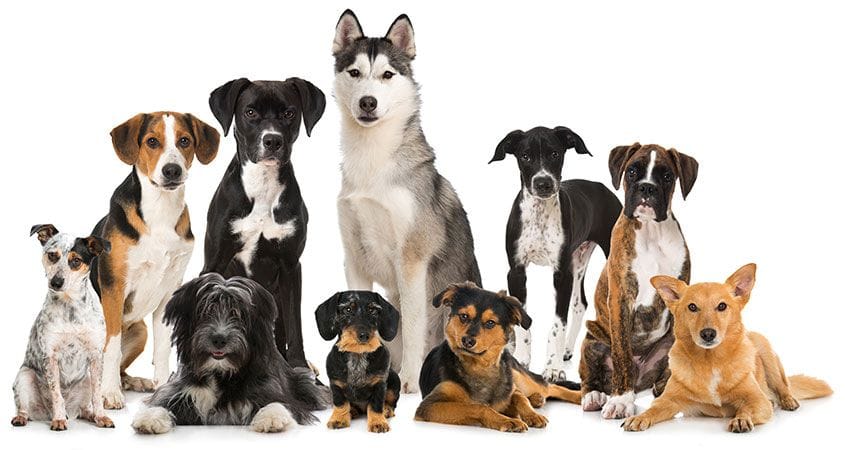Currently, there are almost 400 different domestic dog breeds that are different enough from each other to be classified as unique. However, recent genetic studies have shown that there may only really be 23 different groups, or clades, into which all of these dogs can be sorted.
Just as human DNA testing, like Ancestry or 23AndMe, can show people where their ancestors came from and ultimately in what part of the world they originated, the same testing is now giving a bigger picture of the origin of dogs, and how various breeds are related.
A “clade” is defined as a classification of organisms together in groups with similar traits, especially genetically, traceable to a common ancestor.
In case you’re wondering, the 23 clades are:
- Akita/Asian spitz
- Shih tzu/Asian toy
- Icelandic sheepdog/Nordic spitz
- Miniature schnauzer/schnauzer
- Pomeranian/small spitz
- Brussels griffon/toy spitz
- Puli/Hungarian
- Standard poodle/poodle
- Chihuahua/American toy
- Rat terrier/American terrier
- Miniature pinscher/pinscher
- Irish terrier/terrier
- German shepherd/New World
- Saluki/Mediterranean
- Basset hound/scent hound
- American cocker spaniel/spaniel
- Golden retriever/retriever
- German shorthaired pointer
- Briard/continental herder
- Shetland sheepdog/UK rural
- Rottweiler/drover
- Saint Bernard/alpine
- English mastiff/European mastiff
The origin of breeds
So how do we go from what are basically 23 source dogs to nearly 400 breeds? The culprit here is, of course, mostly us. It began as we selected dogs that were good at particular things, like guarding or herding, and gradually crossbred them to create dogs with different traits. After enough generations, the results were new breeds.
There are some breeds, though, that appear across clades without being considered “founders” because they were used to create certain traits in multiple other breeds. One example is the pug. As Science magazine explains, “(T)he pug, which hailed from China, was used in Europe from the 1500s onward to shrink other breeds. Thus, pug DNA is part of many other toy and small dog genomes.”
These results come from a study published in Cell by Heidi G. Parker, et. al, Science magazine does caution, though, that the study isn’t complete because it hasn’t yet analyzed dogs’ entire genomes, which each involve 2.8 billion base pairs — although some sources put this figure at 2.4 billion because genetics is still an inexact science. Each base pair is made up of two of the chemical “letters” that form DNA. For comparison, although dogs have nearly 70% more pairs chromosomes than humans do (39 vs. 23), we have slightly more base pairs, at 3 billion.
As Peter Savolainen, an evolutionary geneticist at the Royal Institute of Technology in Solna, Sweden, told Science, this study “is a very good first step into the origins of all dog breeds, but half of all breeds are still missing.”
Still, the work so far paints a fascinating picture of dog breeds and their connections, which are sometimes obvious and other times surprising. It’s probably not too hard to see why the Scottish terrier and Cairn terrier are in the same clade, but probably a bit unexpected to see that the Dalmatian and Golden retriever also share a (separate) clade.
What’s even more remarkable is that most of the dog breeds that exist today were created by humans in fewer than 400 years. There’s no telling what new variations we may come up with in future, but the results of this study offer a fascinating glimpse into our dogs’ complicated pasts, and how they became what they are today.











